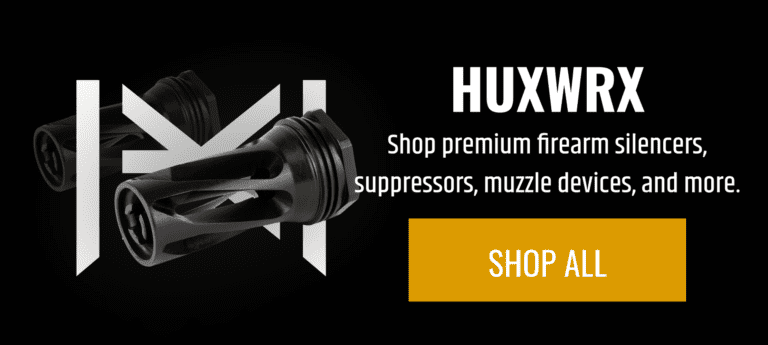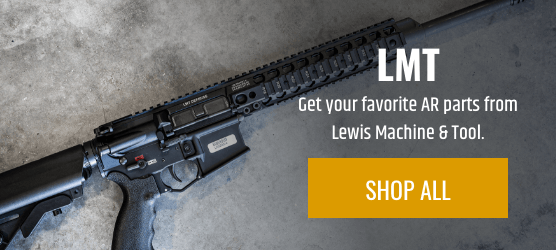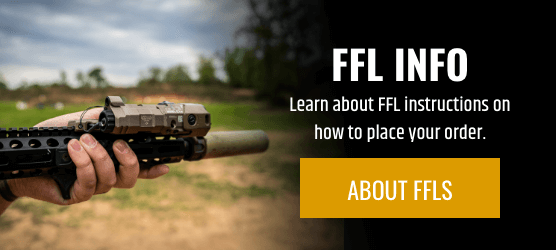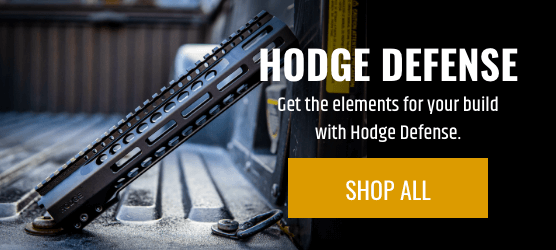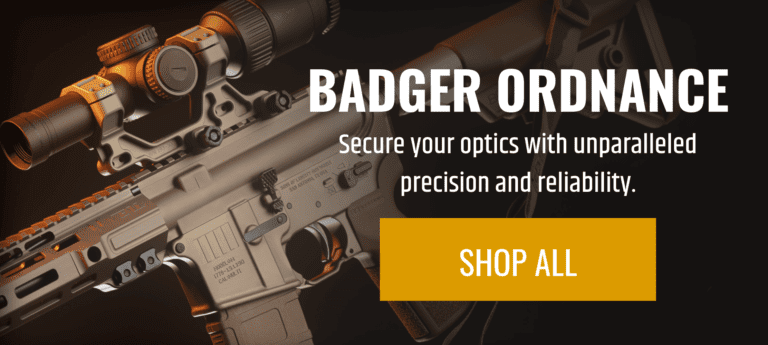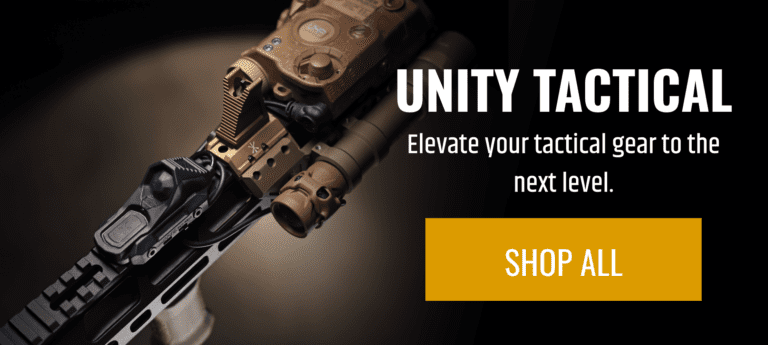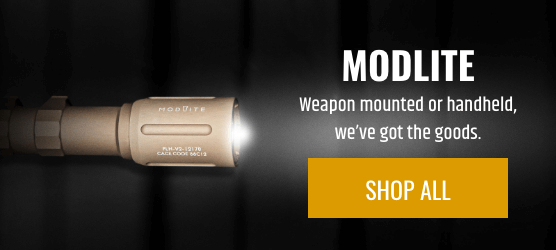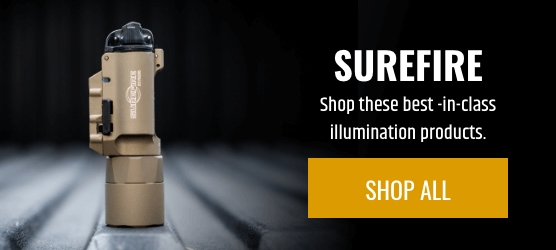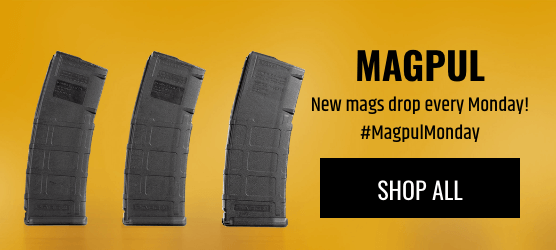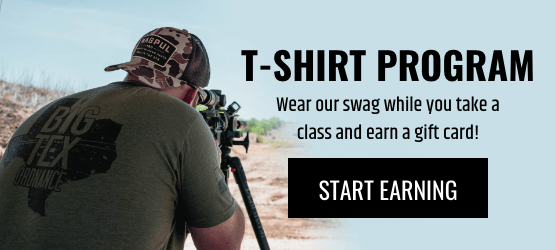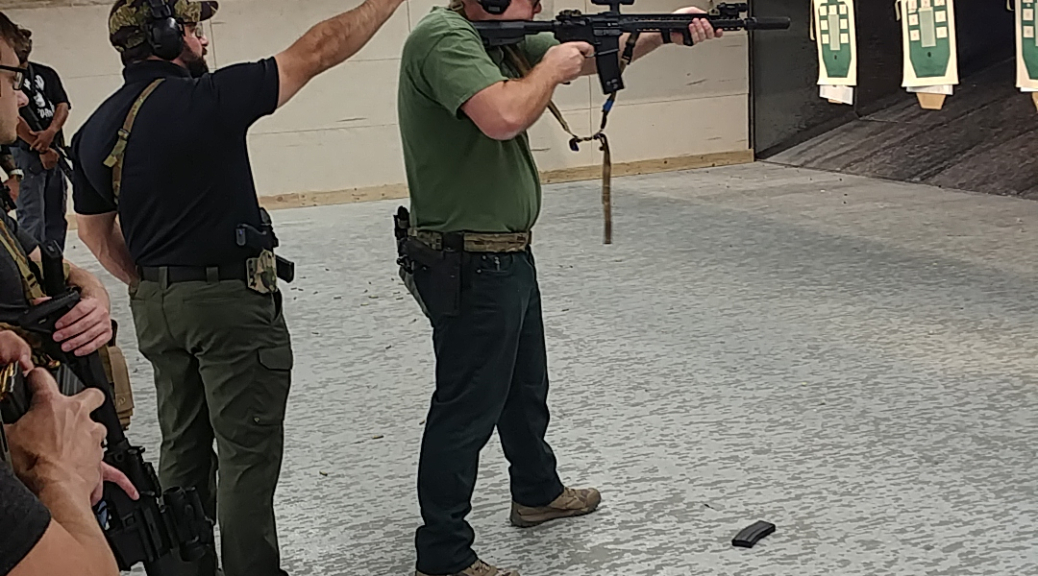

GREEN OPS DEFENSIVE CARBINE CLINIC I AAR (SIG EDITION)
I talk a lot about pistol skills on this blog. There’s a reason for that; when it comes to actually shooting stuff, pistols are the hardest of your options to use at anything beyond about 15yds. Pistol skills also tend to go away the fastest.
But… that is not the same thing as “you can neglect your other weapon skills”. Don’t shoot enough rifle or shotgun, and your skills in that arena will degrade just as surely, if not as quickly. The realization that I had not been doing enough carbine work lately inspired me to sign up for the Green Ops Defensive Carbine Clinic I even though I was already doing another class this month. What did I think? Read on.
(Full disclosure: I got a small class discount for AARs I previously wrote. I didn’t ask for it, and I’d still be taking their classes without it. The amount of money in question is trivial to my situation, and thus had trivial impact on this AAR – or so I hope. I’m also an admin on their alumni group, mostly because I whined at them to start it in the first place.)
As per my new norm, I’ll be utilizing a slightly modified version of the Primary & Secondary AAR format for this post. If you can think of other modifications you’d like to see in these AARs, all you have to do is comment and let me know.
Class Title: Defensive Carbine Clinic I
Class Description: From the website: This clinic covers the basic defensive use of the carbine (AR Platform 5.56/.223). It will begin with the fundamentals of marksmanship and move into more advanced drills. Students will improve their carbine handling skills with a strong emphasis on the fundamentals. Students will learn self-diagnostic skills to continue development of their own personal performance.
Instructors: Bios are on the Green Ops website. The lead instructor was Fred Moore; the assistant instructor was Jo’shua Shaw. Fred has some .mil experience and is a full-time LEO. Josh is a master-class USPSA shooter. Chris Alvarez, the director of training, was there for about an hour of the classroom time, but had to jet after he delivered the safety brief at the range.
This was the first time I had seen a class led without Chris or Mike being around, and with only two instructors to boot. I would say it worked out really well on the whole – Fred did a bang-up job leading the class – but they were aided by having only one “safety problematic” shooter being on the line and some last minute drop-outs. At an open enrollment class, if you wind up with a few people who aren’t quite on top of their game, lower instructor counts can bite you.
Location/Date: NRA HQ Range, Fairfax, VA. The class was on 11/3/2019, from 6PM-10:30PM. I’ve written about the NRA HQ Range a number of times before; it’s a nice place. Just be aware you can’t bring bimetal-jacket ammo. There was some sparking on the backstop this time, and it was a little unclear exactly what was causing it.
Equipment Details: I needed to do a bit more testing on my Sig Whiskey5 1-5×24 LPVO, so I hauled along a Sig 556 SBR with that on top. The 556 in question has the “SWAT” quad rail and a Hogue grip, along with the Whiskey5 in an ADM AD-RECON-SL mount (previously discussed on this blog). Ammo was range-safe Tula in some random pmags. Sling was an Urban ERT with Magpul clips. Mag storage was provided by my GGG UGF belt with Esstac Kywi pouches.
The Sig 556 is an OK platform that performed flawlessly all night, but suffers speed-wise from the right-hand side charging handle and small-ish bolt release. It also has a slightly higher-than-usual height over bore that screwed with me in a couple drills.
The Whiskey5 1-5×24 (“Circleplex” reticle) was a surprise high performer. I went in with some very mixed expectations, but I was shooting both eyes open at 7yds at speed with no problems. I even had to turn down the brightness on the reticle. I’ll post up a review on this later, but I currently think it is the best-value optic you’ve never heard about, as long as you don’t require ranging markings on your reticle (eg, you’re using it like a red dot).
Round count was 150-175 or so. I brought 300, as requested, and didn’t come close to running dry.
Preparation Drills: Pretty much nothing carbine-related. I’m not proud of that, but it’s a lot more convenient to dry-fire handgun.
Author’s Previous Experience: Civilian with no military or LEO background. Have shot some competition, but nothing worth bragging about. Training junkie since April 2018, and have averaged a class a month since then. I am OK with a carbine, pretty good with a pistol, and mediocre-to-average with a shotgun.
Class Demographics: There were ten or eleven students. Racially diverse, but no women. I heard there were a couple last minute drop-outs, which happens this time of year.
Guns were all ARs except for mine (because I’m an iconoclast). Builds were all over the place. There were lube and magazine-related failures throughout class as students discovered first-hand why ARs need to run wet and metal GI mags totally suck. I didn’t see any guns go down hard, so that was nice.
There were a fair number of guys running chest rigs, which struck me as unusual given the current training “meta”. I don’t hate chest rigs – they serve a purpose, especially when they’re plate carriers – but the people wearing them quickly discovered they are super slow to do reloads from and obnoxious for prone use.
Training Day 1 (Evening): Class kicks off with an hour-long classroom session. Chris went over medical first thing, which was smart – it’s easy to forget, but vitally important. Fred then delivered the use of force brief. As usual, it was delivered pretty well. There were more questions than usual, but they were good ones.


Josh did the dryfire show-and-tell. People never seem to talk much about dry-firing with a rifle or a shotgun, but it’s a thing and it does improve skills. I mean, if nothing else, getting faster with reloads and shoulder switches is something you can do at home pretty easily.
With class over, we moved on to the range. Chris gave the range safety brief at this time. To be honest, if you’ve heard one range safety brief, you’ve kinda heard them all. One improvement I would suggest is to really focus on and emphasize class-specific safety items up front – don’t bend down and pick up a mag on a hot line, don’t uncase your rifles before being told to do so, keep your finger off the damn trigger during reloads, etc.
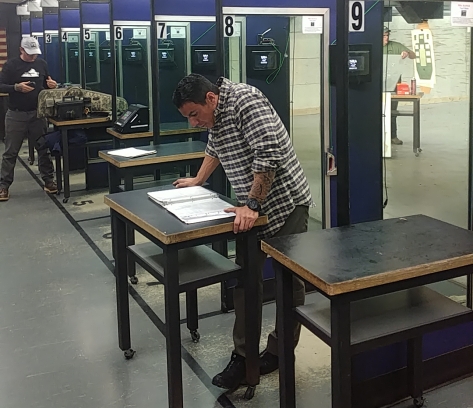

The shooting kicked off with a 25yd prone zero confirmation. I was a little jittery on the first string, but calmed down and delivered a good group on the second. This was a nice exercise for 1) checking out zeros and 2) reinforcing the fundamentals of marksmanship. I didn’t see anybody who flat-out wasn’t zeroed, but did see at least one person who appeared to be running a 100yd zero, which isn’t all that optimal for carbine usage. My zero, for the record, was 36yds – if you do the math (2600 fps from a 10″ barrel), this gets you hits out to about 250yds with no holdover, after which the round starts running out of steam anyways.
Now that our zeros were confirmed, it was drill time! Some of the drills that we did in the first half of class:
- Shoot 1
- Shoot 2
- Shoot 3 (this progression was designed to reinforce the necessity of proper shooting stance and tight grips)
- Shoot 1, reload, shoot 1 (we did some individual timed runs of this, too!)
- Shoot 2, transition, shoot 2
- Shoot 3, transition, shoot 3
We used the Green Ops target, which lent itself quite nicely to this style of shooting. All shooting was done as a single line, no relays. Most of the drills kicked off on a timer beep. One shooter had a bit of a safety issue with trigger finger discipline; the instructors politely corrected him frequently, and the students called him out on it as necessary. I don’t think he was going to muzzle anyone, but the ND potential was non-trivial.


The instructors demo’d all the drills, and did so quite competently. I know this is a sticking point for people, so I just wanted to note that. The drills went pretty smoothly throughout class, but there were some pauses while instructors helped out people. There were definitely times where I felt like we could have moved faster (hot tip: if the mag isn’t working, just dump the mag out of the rotation, stop screwing with it), but it wasn’t a major pain point – we got quite a bit of shooting done.
At this point, we took a short break to hydrate, jam mags, etc. Fred lectured us briefly on malfunction clearance while we did so. There was some emphasis that when you hit the magazine on a tap-rack, you do not smash it super hard for fear of a round popping out of the mag. Josh did the demos, and they were informative. Maybe use dummy rounds next time, though… the rifle never crossed the 180, but it was a teensy bit closer than I was used to.
When we returned to the 7yd line (with new targets), we did a few rounds of tap-rack clearance. This was one of those situations where I got to play with the limitations of the Sig 556 platform, since the charging handle is right-hand side and the handle itself is fairly close to the LPVO. Surprisingly, I didn’t find it much of an issue – I simply rolled the gun and engaged the CH with my left hand. Since you’re rolling the gun to check your malfunction anyways, this didn’t add a whole lot of time. I probably would have been slightly quicker with an AR, but the time difference was not nearly as huge as I thought.


It was at this point that things started getting rather interesting. I guess Fred made some changes to the class, because we did failure drills (2 body, 1 3×5 head) and pelvic girdle drills (2 body, 2 left girdle, 2 right girdle). This was not only fun, but forced you to do that tricky mix of “shoot fast, transition, and then shoot slow”. Nailing that 3×5 head card at 7yds forced you to have both fine trigger control AND consider your offset simultaneously.
If that wasn’t good enough, it was on to BARRICADES at about 15yds. I am somewhat infamous at Green Ops for privately bitching the instructors out when we don’t do barricades, and some notice may have been taken of this from a couple comments I received. The barricade drills were really well-conducted – everyone got a couple turns doing standing-kneeling-transition-kneeling-standing shooting drills because the instructors kept the lines moving. I don’t think I’m exaggerating when I say that it was the most barricade work I ever remember doing at a clinic.
After the barricades, there was a final twist: a modified El Prez. This modification was clever – you had three people on the line, and the drill started whenever the first person decided to start shooting. The premise was that a gunfight often starts with gunfire, and you’ve got to be ready to react to that. I liked it! I honestly had a little bit of difficulty operating my rifle under that stress, which was a real learning experience (did you know Sig 556s don’t have BAD levers? I forgot!). It would be an interesting thing to try at one of the level II pistol clinics, I suspect. The only bad part of it was only being able to do it once.
Class concluded at 10:30PM, as scheduled. They really jammed a ton into that time, and it was great.
Class Debrief: Debrief was short. We put ourselves in whatever armed or unarmed condition we needed to be in, and then brought our stuff and ourselves to the back of the range. Fred handed out certificates. I think they forgot the class picture – it was already really late, and I think the NRA RSOs wanted us to clean up and get out of there.
After Class: No after-class activities – it was 10:30PM, and people needed to head home. Green Ops does send out an email with some info and the drills a couple days later, which is 1) helpful to writing AARs like this and 2) good for that dry-fire practice at home.
Conclusions: The tweaks made to the clinic compared to the last time I took it in April were excellent. Seriously, it was a noticeably better class as a result, and Fred and the Green Ops team deserve a lot of credit for making those important improvements on an already good class. Round counts were a bit higher, the shooting was more challenging (but not inaccessible to beginners!), and I felt like the defensive nature of the class got just a bit more focus. It is possible that I’m the only one who liked the changes, but I’m betting I’m not.
If you are a new to intermediate shooter and want to get better on your carbine, this class is one of the best bets in the DC area to start. Like all training, it will guide you on the right path to excellence, if you’re willing to walk it. And if you’re already walking that path, classes like this make sure you’re not getting sloppy on your fundamentals, and give you a place with harder shooting to test your gear outside of matches.




